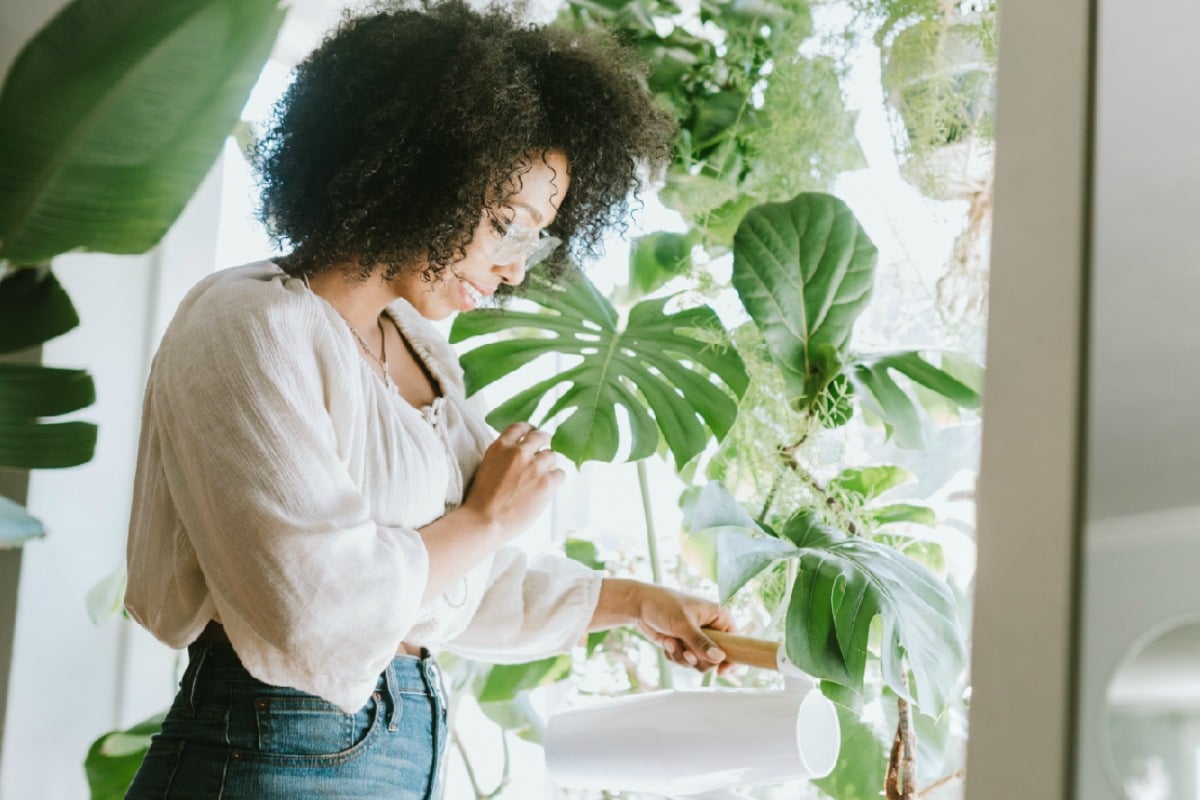Top 5 Indoor Plants for Beginner Plant Parents: Embarking on the journey of plant parenthood can be both exciting and daunting, especially for novice green thumbs. Fear not, for there are a select few indoor plants renowned for their resilience and ease of care, making them ideal companions for those just starting their plant journey.
These hardy green friends are not only visually appealing but also contribute to a healthier indoor environment.
This guide will delve into the top five indoor plants that are perfect for beginner plant parents, exploring their unique characteristics, care requirements, and the benefits they bring to your home. From the low-maintenance Snake Plant to the air-purifying Spider Plant, these chosen few are sure to thrive under your care, fostering a sense of accomplishment and a touch of nature within your living space.
Top 5 Indoor Plants for Beginner Plant Parents
Bringing nature indoors can transform your home into a more inviting and relaxing space. It can also bring numerous benefits to your health and well-being. Indoor plants can improve air quality, reduce stress, and even boost creativity. If you’re a beginner plant parent, starting with the right plants is crucial for success.
These plants are known for their resilience and low-maintenance requirements, making them perfect for novice plant owners.
Low-Maintenance Indoor Plants for Beginners
The following list highlights five indoor plants known for their hardiness and ease of care, making them ideal for those new to plant parenting.
- Snake Plant (Sansevieria trifasciata): Snake plants are incredibly resilient and can tolerate low light conditions, making them perfect for beginners. They require minimal watering, only when the soil is completely dry, and can withstand occasional neglect. Snake plants are also known for their air-purifying qualities, removing toxins like formaldehyde and benzene from the air.
- ZZ Plant (Zamioculcas zamiifolia): The ZZ plant is another low-maintenance option that thrives in low light and infrequent watering. It’s known for its ability to withstand drought and can tolerate a wide range of temperatures. Its glossy, dark green leaves add a touch of elegance to any space.
- Peace Lily (Spathiphyllum): Peace lilies are known for their beautiful white flowers and ability to purify the air. They prefer bright, indirect light and regular watering, but can tolerate some neglect. These plants are also relatively pest-resistant, making them a good choice for beginner plant parents.
- Cast Iron Plant (Aspidistra elatior): As its name suggests, the cast iron plant is incredibly tough and can withstand a wide range of conditions. It tolerates low light, infrequent watering, and even neglect. It’s also known for its air-purifying properties, removing toxins like formaldehyde and xylene from the air.
- Pothos (Epipremnum aureum): Pothos is a popular choice for beginners due to its ease of care and adaptability. It thrives in bright, indirect light but can also tolerate low light conditions. Pothos is a fast-growing vine that can be trained to climb or trail, adding a touch of greenery to any space.
Snake Plant (Sansevieria trifasciata)

The Snake Plant, also known as Mother-in-Law’s Tongue, is a popular choice for beginner plant parents due to its hardiness and low-maintenance nature. This striking plant boasts a unique appearance with rigid, sword-shaped leaves that can grow up to 4 feet tall.
These leaves are typically green with yellow or silver variegation, creating a visually appealing contrast. The Snake Plant’s upright growth habit makes it an excellent choice for adding vertical interest to a room.
Low Light Tolerance and Infrequent Watering
The Snake Plant thrives in low light conditions, making it an ideal choice for rooms with limited natural light. It can tolerate a wide range of light levels, from bright indirect light to low light, but it prefers to avoid direct sunlight.
This makes it an excellent option for offices, bedrooms, and other spaces where natural light is limited.The Snake Plant is also remarkably drought-tolerant, able to withstand infrequent watering. It’s best to allow the soil to dry out completely between waterings, as overwatering can lead to root rot.
During the winter months, when growth slows down, the plant may only need watering once a month or even less. This makes it a great choice for busy individuals who may not always be able to remember to water their plants regularly.
Air-Purifying Properties and Benefits
The Snake Plant is known for its air-purifying properties, effectively removing harmful toxins from the air, such as formaldehyde, benzene, and trichloroethylene. This makes it a beneficial addition to any home or office environment, contributing to a healthier indoor atmosphere.
The Snake Plant’s ability to absorb these toxins can help improve air quality and potentially reduce the risk of respiratory problems.
ZZ Plant (Zamioculcas zamiifolia): Top 5 Indoor Plants For Beginner Plant Parents
The ZZ plant, scientifically known as Zamioculcas zamiifolia, is a popular choice for beginner plant parents due to its hardiness and low-maintenance nature. This tropical perennial boasts glossy, dark green foliage that adds a touch of elegance to any indoor space.
Its unique growth habit and resilience make it an ideal option for those who may not have a green thumb or struggle to maintain other houseplants.
Low Light Tolerance and Neglect Resistance
The ZZ plant is known for its ability to thrive in low light conditions, making it perfect for dimly lit rooms or areas that receive minimal sunlight. It can tolerate periods of neglect, making it an excellent choice for busy individuals or those who often forget to water their plants.
The ZZ plant’s adaptability to low light is attributed to its ability to photosynthesize efficiently, even in low-light environments. Its thick, fleshy leaves store water, allowing it to withstand periods of drought and neglect.
Pothos (Epipremnum aureum)
The Pothos, also known as Devil’s Ivy, is a popular indoor plant renowned for its easy-care nature and striking foliage. Its trailing growth habit and vibrant, heart-shaped leaves make it a perfect choice for hanging baskets, shelves, or even climbing up a moss pole.
Adaptability to Light Conditions
Pothos plants are highly adaptable and can thrive in a wide range of light conditions, from bright indirect light to low light. They can tolerate some direct sunlight, but it’s best to avoid prolonged exposure, which can scorch the leaves.
In low light, the foliage may become less vibrant, but the plant will still grow.
Watering Schedule
Pothos plants prefer to dry out slightly between waterings. Overwatering is a common mistake that can lead to root rot. Allow the top inch of soil to dry before watering thoroughly. The frequency of watering will depend on factors such as light levels, temperature, and the size of the pot.
Air-Purifying Qualities
Pothos plants are known for their air-purifying qualities. They can remove common indoor pollutants such as formaldehyde, benzene, and carbon monoxide from the air, improving the overall air quality in your home.
Ease of Propagation, Top 5 Indoor Plants for Beginner Plant Parents
Pothos plants are incredibly easy to propagate. You can simply take a cutting from a stem, remove the lower leaves, and place it in water or soil. The cutting will quickly develop roots and produce a new plant.
Cast Iron Plant (Aspidistra elatior)
The Cast Iron Plant, also known as Aspidistra elatior, is a popular choice for beginner plant parents due to its remarkable hardiness and resilience. Its common name accurately reflects its ability to withstand challenging conditions and thrive with minimal care.
The Cast Iron Plant’s Hardy Nature and Tolerance to Neglect
The Cast Iron Plant is renowned for its ability to tolerate neglect, making it an ideal choice for those who may not have a green thumb or struggle to remember to water their plants regularly. Its tough, thick leaves are designed to retain moisture, allowing it to survive periods of drought without significant harm.
This resilience is attributed to its native habitat in the shaded forest floors of East Asia, where it evolved to adapt to low light conditions and infrequent rainfall.
The Cast Iron Plant’s Ability to Thrive in Low Light and Tolerate Infrequent Watering
Cast Iron Plants are incredibly adaptable to various light conditions, making them suitable for a wide range of indoor environments. They can thrive in low light conditions, such as dimly lit corners or rooms with limited natural light. However, they can also tolerate moderate to bright indirect light.
While a Snake Plant or ZZ Plant might be a great choice for beginner plant parents, why not add a touch of spooky charm to your home with some Halloween-themed houseplants? Check out How to Create a Haunted Garden With Halloween-Themed Houseplants for inspiration on how to transform your indoor plants into a spooky haven.
Whether you’re aiming for a classic gothic vibe or a whimsical Halloween look, there’s a plant out there for every spooky aesthetic.
In terms of watering, Cast Iron Plants prefer to be slightly dry between waterings. Overwatering is more detrimental to their health than underwatering. Allowing the soil to dry out completely before watering is recommended to prevent root rot.
The Cast Iron Plant’s Air-Purifying Properties and its Ability to Survive in Challenging Environments
Beyond its hardiness and low-maintenance nature, the Cast Iron Plant also possesses air-purifying properties. Studies have shown that it can effectively remove harmful toxins from the air, improving indoor air quality. This makes it a beneficial addition to any home, especially in areas with limited ventilation or high levels of air pollution.
While the Top 5 Indoor Plants for Beginner Plant Parents often focus on easy-to-care-for greenery, consider adding a touch of the macabre with carnivorous plants! If you’re looking for a unique and spooky addition to your home, check out our guide on How to Use Carnivorous Plants as Halloween Houseplants , and then return to our list of top beginner plants for some more traditional greenery.
The Cast Iron Plant’s ability to survive in challenging environments makes it a versatile and resilient plant that can enhance both the aesthetic appeal and air quality of any indoor space.
Spider Plant (Chlorophytum comosum)
The Spider Plant, with its distinctive arching foliage and charming spiderettes, is a popular choice for beginner plant parents. It is renowned for its air-purifying qualities and ease of care, making it an ideal addition to any home.
Ease of Care and Propagation
The Spider Plant is known for its resilience and adaptability. It thrives in a wide range of conditions and requires minimal attention. Its propagation is simple and rewarding. Spiderettes, or baby plants, grow on long stems called stolons. These spiderettes can be easily detached and potted, quickly developing into new plants.
Light Conditions and Watering
Spider Plants tolerate various light conditions, from bright indirect light to low light. However, they prefer bright, indirect light, which promotes lush growth and vibrant foliage. Overwatering is the most common mistake with Spider Plants. It’s best to let the soil dry out slightly between waterings.
Caring for Your Indoor Plants
Now that you’ve chosen your perfect plant companions, let’s delve into the essential care tips to keep them thriving. Understanding their basic needs will ensure their longevity and beauty in your home.
Plant Care Basics
Providing the right amount of light, water, and nutrients is crucial for your plants’ well-being. Here’s a table summarizing the care requirements for each plant:
Plant |
Light |
Water |
Fertilizer |
Notes |
|---|---|---|---|---|
Snake Plant (Sansevieria trifasciata) |
Bright indirect light, tolerates low light |
Water when soil is completely dry, about every 2-4 weeks |
Fertilize during growing season (spring and summer) with a balanced liquid fertilizer diluted to half strength |
Very drought-tolerant, overwatering is the most common problem. Avoid letting water sit in the pot’s base. |
ZZ Plant (Zamioculcas zamiifolia) |
Low to bright indirect light, tolerates low light |
Water when soil is completely dry, about every 2-4 weeks |
Fertilize during growing season (spring and summer) with a balanced liquid fertilizer diluted to half strength |
Extremely drought-tolerant, overwatering can lead to root rot. |
Pothos (Epipremnum aureum) |
Bright indirect light, tolerates low light |
Water when soil is slightly dry, about every 1-2 weeks |
Fertilize during growing season (spring and summer) with a balanced liquid fertilizer diluted to half strength |
Easy to propagate, can be grown in water or soil. |
Cast Iron Plant (Aspidistra elatior) |
Low to medium indirect light, tolerates low light |
Water when soil is dry, about every 2-3 weeks |
Fertilize occasionally during growing season (spring and summer) with a balanced liquid fertilizer diluted to half strength |
Very tolerant of neglect, can survive in low light and infrequent watering. |
Spider Plant (Chlorophytum comosum) |
Bright indirect light, tolerates low light |
Water when soil is slightly dry, about every 1-2 weeks |
Fertilize during growing season (spring and summer) with a balanced liquid fertilizer diluted to half strength |
Easy to propagate from plantlets that grow on the stems. |
Troubleshooting Common Issues

Even the most resilient indoor plants can experience problems, especially for beginner plant parents. Understanding common issues and their solutions can help you keep your plants thriving.
Common Plant Problems and Solutions
Here’s a table outlining some common problems experienced by beginner plant parents, their causes, and solutions:
Problem |
Cause |
Solution |
|---|---|---|
Yellowing Leaves |
Overwatering, underwatering, nutrient deficiency, pests, disease |
Adjust watering frequency, fertilize regularly, inspect for pests, treat any diseases. |
Drooping Leaves |
Underwatering, overwatering, lack of light, rootbound, pests |
Water thoroughly, check for root rot, repot if necessary, provide adequate light, treat any pests. |
Brown Leaf Tips |
Underwatering, dry air, low humidity, mineral buildup |
Water consistently, increase humidity, flush soil with water to remove mineral buildup. |
Pests |
Infestation from other plants, inadequate care |
Isolate infected plants, treat with insecticidal soap or neem oil, improve plant care practices. |
Disease |
Fungal or bacterial infections, poor air circulation, overwatering |
Remove infected leaves, improve air circulation, adjust watering frequency, treat with fungicide or bactericide. |
Conclusion
Starting your plant parenting journey can be exciting and rewarding. Choosing the right plants is crucial, especially for beginners. The five plants we’ve discussed – Snake Plant, ZZ Plant, Pothos, Cast Iron Plant, and Spider Plant – are known for their resilience and adaptability, making them ideal for novice plant owners.
Embracing the Journey of Plant Parenthood
These low-maintenance plants require minimal care, making them perfect for those with busy schedules or limited plant care experience. They are also forgiving of occasional neglect, allowing you to learn and grow as a plant parent without fear of failure.
“Patience and observation are key to successful plant care.”
As you gain confidence, you can explore other low-maintenance indoor plant options, such as peace lilies, philodendrons, or succulents. Remember, every plant is unique and requires individual attention. Observe your plants closely, learn their needs, and adjust your care routine accordingly.
With patience and a little practice, you’ll be well on your way to becoming a thriving plant parent.
Last Recap
As you navigate the world of indoor plants, remember that patience and observation are key. These five plants are excellent starting points for beginner plant parents, offering a forgiving learning curve and a rewarding experience. Embrace the journey, enjoy the process, and watch as your green companions flourish under your care.
With a little dedication, you’ll be well on your way to creating a thriving indoor oasis.
Helpful Answers
What is the best way to water indoor plants?
The best way to water indoor plants is to allow the soil to dry out slightly between waterings. This prevents overwatering, which can lead to root rot. When watering, thoroughly soak the soil until water drains out of the drainage holes.
Avoid letting the soil become completely dry, as this can stress the plant.
How often should I fertilize my indoor plants?
Fertilizing indoor plants is generally recommended during the growing season, which is typically from spring to fall. Use a balanced liquid fertilizer diluted to half strength and apply it every 2-4 weeks. Avoid fertilizing during the winter months when plant growth slows down.
What are some common pests that affect indoor plants?
Common pests that affect indoor plants include aphids, mealybugs, spider mites, and scale insects. These pests can be identified by their appearance and the damage they cause to the plant. Treatment options include using insecticidal soap, neem oil, or diatomaceous earth.
